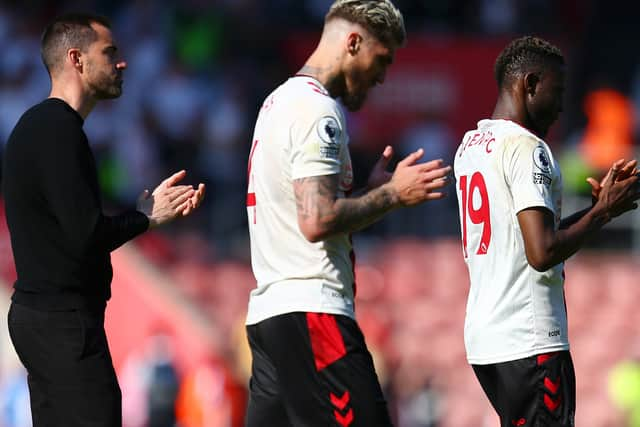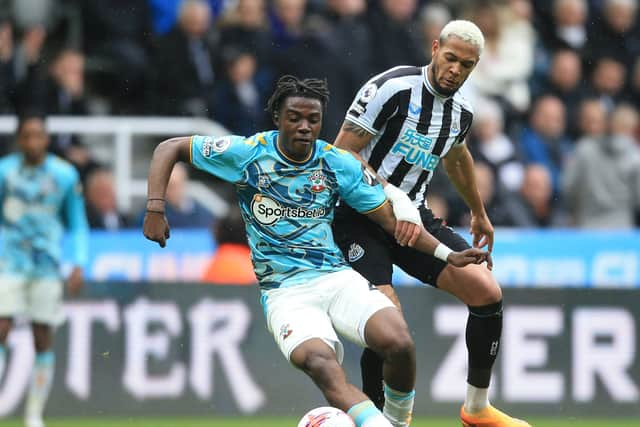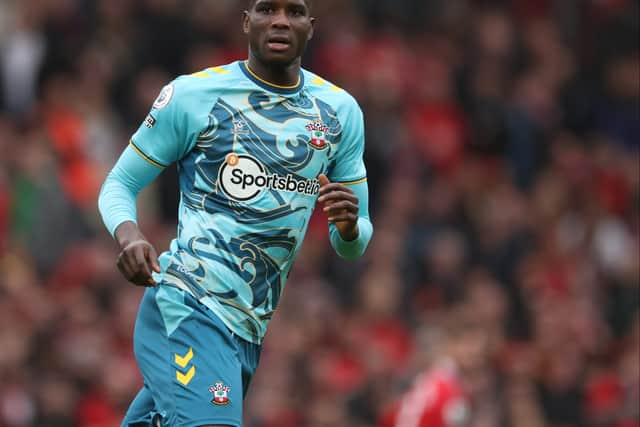The Welsh David Brent and £120m wasted - Southampton’s three big mistakes that led to relegation
and live on Freeview channel 276
A long, limping journey towards failure is finally complete – Southampton have been relegated, having been bottom of the table since Boxing Day, and having failed to win since the 1-0 defeat of Leicester City in early March.
At the heart of a painful and fruitless season has been a string of board-level decisions which have made this season’s struggles all but inevitable. The takeover of the south coast club by Sport Republic – headed by former Brentford director of football Rasmus Ankersen and backed by two billionaire investors – seemed like good news at first, with Ankersen’s data-led recruitment strategy having proven itself in west London. The inference was of a takeover backed by serious money but spearheaded by a man with the experience and game knowledge to make sure it was spent in the right places.


Advertisement
Hide AdAdvertisement
Hide AdInstead, a series of errors has been made both in the transfer market and in managerial appointments. Southampton spent over £120m on incoming transfers this season – more than they will now receive in parachute payments – and much of it was spent in the wrong places or wasted entirely. Let’s go step by step and see where Sport Republic and the Saints went wrong, and see what lessons can be learned from a deeply disappointing season.
Lots of players but no tactical direction
15 signings came in the doors at St. Mary’s Stadium this summer, and 24 players made at least 10 appearances for the club – but only nine started more than 20 matches. The enormous rotation of the squad is symptomatic of a failure to find an underlying tactical direction, a direction that Sport Repblic didn’t attempt to inculcate as they cycled disastrously through managers.
Ralph Hasenhüttl tried out a 4-2-3-1 double pivot and a 4-2-2-2. After his removal, Nathan Jones tried to institute a 3-5-2 formation with wing-backs, to disastrous effect, eventually tossing and turning between that system and the 4-2-3-1 his predecessor had used. When Rubén Sellés’ turn came around, he switched back to the 4-2-2-2, only to wind up running the double pivot back again for the defeats to Nottingham Forest and Fulham. Players found themselves chopping and changing roles, in and out of the squad, and very few had a settled position – a tricky situation for experience hands, but even harder for one of the youngest squads in the Premier League.
That tumbling tactical morass may explain why Southampton’s passing and possession statistics were routinely among the worst in the league – even James Ward-Prowse’s passing numbers are little better than mediocre, and most of his team-mates figures fall far below that description. There was ceaseless tactical uncertainty throughout the season and players rarely knew where the next man was – or who that man would be, as different managers chopped and changed line-ups on a regular basis. A settled strategy makes playing football easier, and Southampton never had that.
Advertisement
Hide AdAdvertisement
Hide AdIf Sport Republic had a clear tactical vision in mind for the club, they rapidly abandoned it. Hasenhüttl, Jones and Sellés are all wildly differing coaches with different styles, ideas and man management skills, and there was no guiding principles behind the appointments or – as far as one can tell – in the signings that were made. Instead of buying players to a plan and appointing coaches with the ability to implement that plan, they were sent spiralling in a new direction every month or so and endured a short but painful spell under the guidance of a manager with a penchant for rambling, Brentesque metaphors and bizarrely specific outbursts of egotism. It was a largely directionless mess, and it showed.
Going too hard on youth and long-term gains
“You don’t win anything with kids” may have been a rapidly disproven maxim, but this isn’t Football Manager – filling the squad with callow youngsters has cost Southampton dearly this season. Eight of the 15 players signed over the course of the season were under the age of 21, and the Saints tried to fill key roles with unproven players, with the results speaking for themselves – where experience was required, it was missing.


There have been some successes – Roméo Lavia and Armel Bella-Kotchap both have big futures and played well for most of the season at a combined outlay of around £20m – but other pick-ups have struggled. Gavin Bazunu is widely regarded as a huge talent but had never played domestic football above League One level, and whatever data Ankersen and his recruitment team felt they had on the 21-year-old goalkeeper clearly didn’t bear fruit – his save percentage and xG prevented were the worst not just in the Premier League, but across the big five divisions in Europe. Sékou Mara, the only striker brought in during the summer, scored just one league goal after arriving from Bordeaux for around £11m. Carlos Alcaraz was at least something of a goal threat, but his numbers in every other midfield department are disastrous – he’s in the lowest percentiles for attacking midfielders in top divisions for almost every attacking metric other than xG.
If the idea was to buy young talent cheap, develop it and sell high, then it went too far. Had players like Mara and Alcaraz been supplementing more experienced first-teamers, they could be regarded as projects with room to grow – instead they were asked to do heavy lifting they weren’t capable of at this point in their careers. Maybe Bazunu will come good, but a starting role in the Premier League was plainly too much, too early.
Advertisement
Hide AdAdvertisement
Hide AdSouthampton started the summer with one of the weaker squads in the league and instead of strengthening, spent a large portion of their money on speculative projects. They may yet turn a long-term profit, of course – Lavia and Bella-Kotchap will surely be sold on for good money at some point – but relegation will reduce their value and no transfer profit can outweigh the cost of spending time back in the Championship. Even if you are using economics as your prime driver in the transfer market, it should have been clear that maintaining Premier League status was the best economic outcome of all. Had the money outlaid on youth been spent on, say, a medium-term replacement for Danny Ings, both the fans and accountants would probably have been happier.
Failing to fix the forward line
Whatever the age and profile of the players Ankersen wanted, and whatever tactics wound up being used, there was one absolute constant for the Saints this season – a distinct and continuous lack of goals.


Since Danny Ings left the club, there has been a void up front which has direly needed filling. Ward-Prowse wound up as the club’s leading scorer with eight, while only five players in the entire squad managed an xG higher than 2 over the course of 36 matches. That is a truly damning statistic that underlines a huge problem – Southampton have very few goals in them, and even the most settled strategic and managerial situation can’t work without some goals.
Southampton have, perhaps, been a little unlucky at times with recent attacking signings – it would be a very shrewd judge who seriously thought that Adam Armstrong (one goal this campaign) would fare as badly as he has in the Premier League, and the £15m January purchase of Paul Onuachu (no goals) looked perfectly reasonable on paper – he managed 40 goals over the last two years with KRC Genk. But that no striker save for the 20-year-old Mara was signed in the summer suggests an astonishing blindness to a problem that existed last season as well – and even the most optimistic reading of Mara’s prospects would surely have precluded the notion of a young man with 11 professional goals in his first two senior seasons becoming the 10-20 goal player that Southampton certainly needed.
We want your feedback on 3 Added Minutes - details here
Advertisement
Hide AdAdvertisement
Hide AdThe £120m spending this summer may have been significant by the Saints’ stingy recent standards, but it was spread thin over a combination of youngsters and unhelpful senior additions like Joe Aribo (two goals) and Miroslav Oršić (no goals, and only one appearance). Had they combined the money from four or five of the questionable transfers they made to purchase one proven striker, they may well have had the firepower to at least keep them fighting for their league status. As it was, they currently have the fewest goals of any team in the league, and will be going down.
There will be plenty of time for reflection over the summer, and a chance to put things right. The combination of parachute payments and the likelihood of a couple of profitable transfers means there should be the financial room to build a good team for the second tier, and if a few more youngsters come good next season there may well end up being plenty more optimism down the line – but Sport Republic will need to find an underpinning tactical plan for the club, and will need to learn to spend their money more smartly if they want to return to the Premier League and remain there for the long term.
Comment Guidelines
National World encourages reader discussion on our stories. User feedback, insights and back-and-forth exchanges add a rich layer of context to reporting. Please review our Community Guidelines before commenting.
